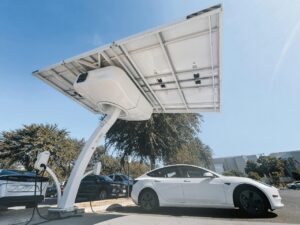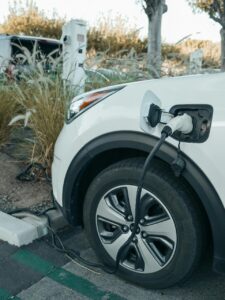
Electric vehicles have transformed the transport sector. They are the leading group in this industry. These can be credited to worldwide acceptance due to the reasons that electric vehicles do not use fuel, but conventional fuels; instead, they run on electricity.
Rise of Electric Vehicles
The first operational prototypes of electric vehicles date back to the 19th century. However, widespread internal combustion engines dominated these vehicles for much longer. A renewed thrust toward reducing emissions and fossil fuel usage has put electric vehicles firmly back on the forefront as an important choice in today’s world. According to the International Energy Agency, more than 14 million electric vehicles were sold in 2023, and only 2.2 million were sold in 2019. The top of the global push in this revolution is Norway, followed by China and then the United States. For example, in Norway, electric vehicles occupied the lion’s share of 80% of total sales in 2022. On the other hand, China was able to dominate the biggest portion of global EVs through quite aggressive policies and incentives it gave to manufacturers as well as consumers, taking up the biggest share of international sales of EVs in 2023 with 60%.
Advantages of Electric Vehicles

1. Environmental Benefits
EVs are very well known for their environmental benefits. It leads to zero tailpipe emissions, a method of reducing air pollution an acute problem in urban areas. In favor of this claim, an example can be the finding from one report of the United States Department of Energy that a transition from a gasoline car to EVs will reduce the levels of 4.6 metric tons of carbon dioxide yearly.
2. Economic Efficiency
Usually operating an EV is less costly than running a conventional vehicle. Electricity is going to be cheaper than gasoline, while also having relatively few moving parts in a traditional vehicle, so maintaining an EV is going to be more reasonable too. In fact, Tesla estimates its Model 3 saves owners approximately $6,000 over six years versus a similar gas-powered vehicle.
3. Technological breakthrough
EVs are the benchmark of innovation in the car world. Advanced batteries that offer much greater ranges to the driverless automobile systems, the EVs stay on top. Consider Tesla’s latest versions: their ranges exceed 400 miles on a single charge, lifting the most common fear of users: range anxiety.

Challenges facing electric vehicles Most importantly, however, EVs face the following challenges:
1.High Initial Cost
Even though a more expensive vehicle than the conventional vehicle, at least in part because of lithium-ion batteries at the time of the sale, that margin is eroding, and BloombergNEF believes that the cost parity will be achieved for EVs by 2026.
2. Charging Infrastructure
The basis will also be supported by a firm and accessible recharging infrastructure. However, there are places, even in the Netherlands, that are better than many others at public charging point networks. In 2023, it is indicated that Pakistan has less than 500 public charging stations, while China has 150,000.
4. Environmental concerns associated with battery production:
Electrical energy reduced emissions and usage issues created environmental concerns over the process produced and recovered during the production of extracting lithium, cobalt, and other needed materials. The topic remains a point of scientific interest, since work is a constant, step-by-step, incremental movement towards solid-state technology. Government Policies Electric cars are made accessible through various policies initiated by governments around the world.
For example, in 2021, the European Union debated banning sales of new combustion engine cars by 2035 as part of its steps toward a net-zero-carbon future. In the United States, the administration recently reinstated tax credits worth $7,500 to electric car buyers under the Inflation Reduction Act. The electric vehicle technology investment and funding done by China has allowed this country to lead in the electric vehicle market. Advancements in solid-state battery technology will further push the envelope on energy density and bring the costs down. Electric vehicles are supposed to be part of renewable energy systems and smart charging networks, therefore forming a more efficient and sustainable structure.
Conclusion
The emergence of electric vehicles shows more than just the shift in transportation; it signifies progress toward a greener and more sustainable future. Although many challenges are yet to come, progress in innovation and policy support makes it easier to adopt. Adopting electric vehicles can greatly minimize carbon footprint and air quality and, most importantly, make this earth greener for the next generation. Long is the journey to the fore, and each one of the EVs on the roads brings us closer toward a sustainable world.



